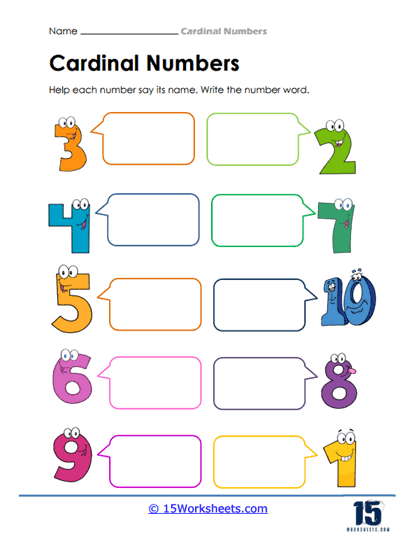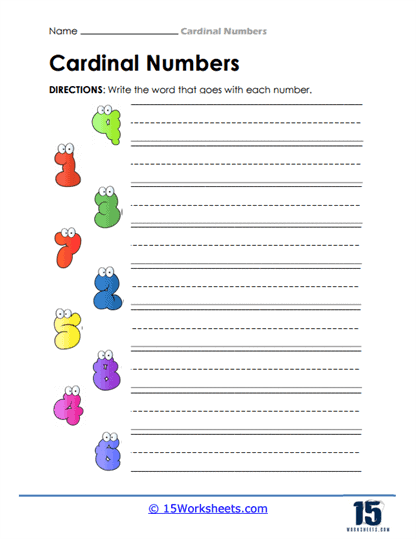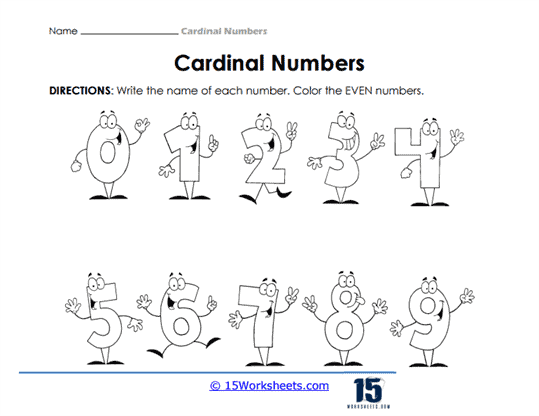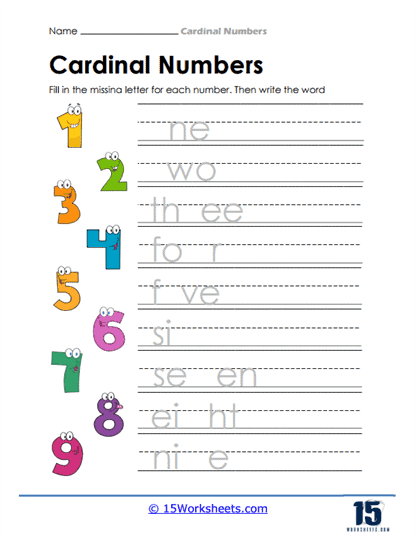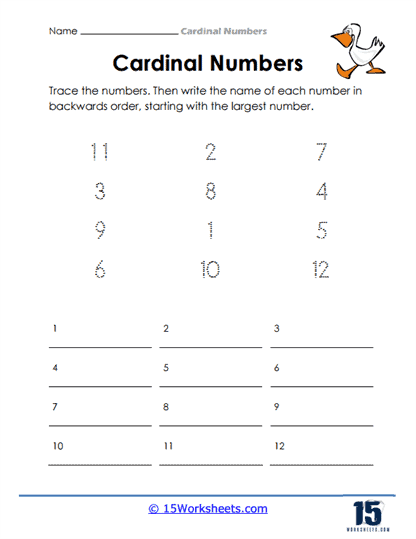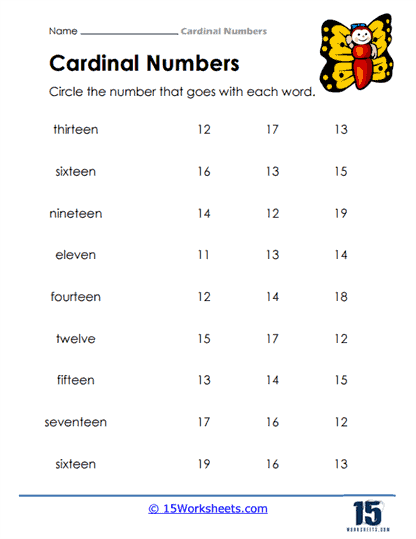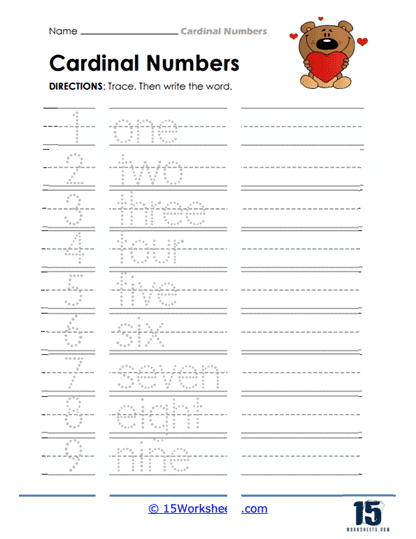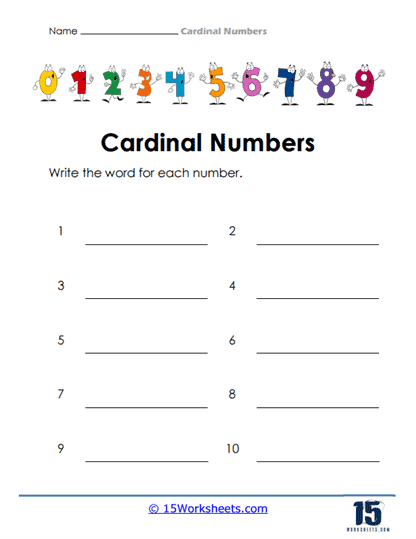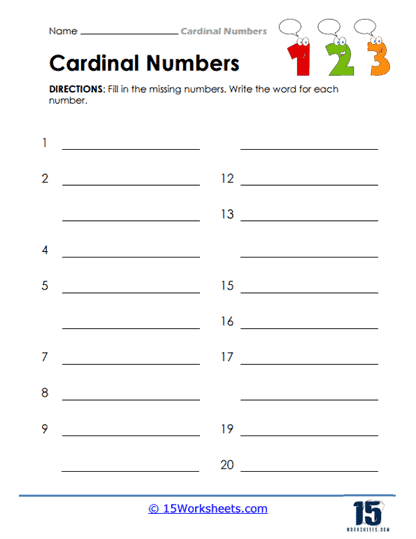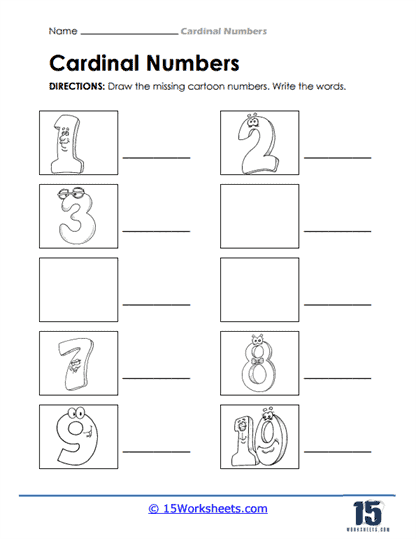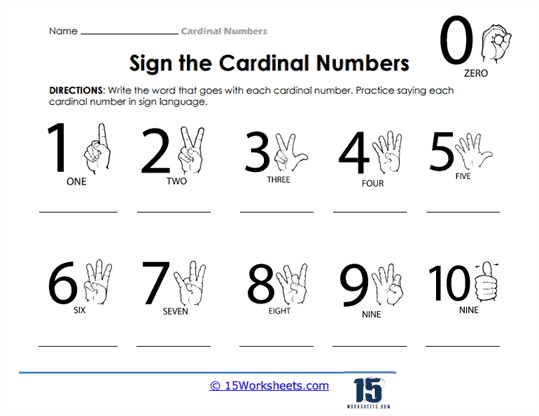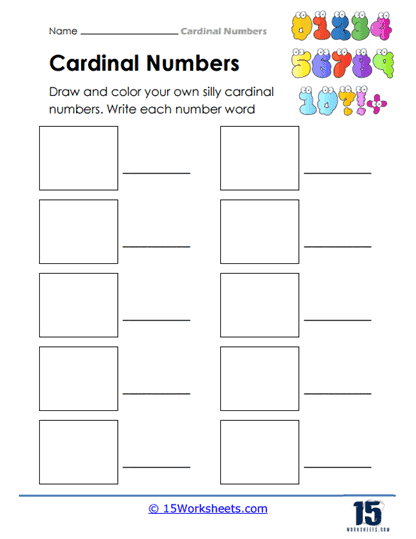Cardinal Numbers Worksheets
About These 15 Worksheets
Cardinal Numbers Worksheets will help students practice and develop their understanding of cardinal numbers. These worksheets consist of various exercises and activities that engage students in counting, recognizing, and writing cardinal numbers.
Cardinal numbers are numbers used to count or indicate quantity. They are the numbers we use in everyday life, such as 1, 2, 3, 4, and so on. These worksheets aim to strengthen students’ numerical literacy, improve their counting skills, and promote their ability to recognize and work with cardinal numbers. The worksheets include sections where students practice counting objects or groups of objects. For example, students may be given pictures of animals, fruits, or other objects and asked to count them. They would then write down the corresponding cardinal number that represents the quantity. This activity helps students improve their counting abilities and associate the correct number with the counted objects.
In addition to counting exercises, the activities focus on number recognition and sequencing. Students might be asked to identify and circle specific cardinal numbers within a sequence of numbers or fill in missing numbers in a sequence. These activities reinforce the ability to recognize and order cardinal numbers accurately.
Furthermore, the worksheets often include sections where students practice writing cardinal numbers. This can involve tracing the numbers or independently writing them. By engaging in these activities, students reinforce their ability to represent cardinal numbers correctly and develop their handwriting skills. Students may be asked to match objects with their corresponding cardinal numbers or sort objects into groups based on specific cardinal numbers. These activities promote visual recognition of cardinal numbers and help students associate numbers with quantities.
What Are Cardinal Numbers?
Cardinal numbers are a type of number used to indicate the quantity or “how many” of something. They represent the size of a set or collection, without regard to the order of the elements within the set. Cardinal numbers are the most common type of numbers we use in everyday life for counting objects, measuring, or comparing quantities.
In English, the cardinal numbers start with zero (0), and then proceed with one (1), two (2), three (3), four (4), five (5), and so on. These numbers can be extended infinitely, following a standard pattern of numerical progression.
When teaching cardinal numbers to children, it’s essential to focus on the concept of counting and understanding the quantities that the numbers represent. Activities such as counting objects, using visual aids (like flashcards or illustrations), practicing with number lines, and playing counting games can all help children develop a strong understanding of cardinal numbers.
In contrast to cardinal numbers, ordinal numbers are used to indicate the position or order of elements in a sequence. Ordinal numbers include first (1st), second (2nd), third (3rd), fourth (4th), and so on. While cardinal numbers focus on “how many,” ordinal numbers focus on “which one” in a sequence or list.
How Are They Used in Daily Life?
Cardinal numbers are used in various aspects of daily life to express quantities, count objects, and measure. Some common examples of cardinal number usage include:
Counting Objects – We use cardinal numbers to count the number of items in a group, such as the number of books on a shelf, the number of apples in a basket, or the number of people in a room.
Measuring – Cardinal numbers are used to express measurements, like distance, weight, or time. For example, we might say a journey is 15 miles, a package weighs 3 pounds, or a meeting lasts 2 hours.
Shopping – When buying items at a store or online, we use cardinal numbers to indicate how many items we want to purchase. For example, we might buy 4 bottles of water, 2 loaves of bread, or 5 pairs of socks.
Recipes and Cooking – In cooking, we use cardinal numbers to measure ingredients, such as 3 cups of flour, 2 tablespoons of oil, or 4 eggs.
Scheduling – Cardinal numbers are used to indicate the duration or frequency of activities, such as exercising for 30 minutes, attending a class 3 times a week, or taking a 10-day vacation.
Finances – When dealing with money, we use cardinal numbers to express prices, salaries, or budgets. For example, a shirt might cost $20, an employee may earn $3,000 per month, or a project budget may be set at $50,000.
Sports and Games – Cardinal numbers are used to keep score or track progress in sports and games, like the number of points a team has scored or the number of completed levels in a video game.
These are just a few examples of the many ways cardinal numbers are used in daily life. Overall, cardinal numbers play a crucial role in representing quantities, counting, and measuring in various contexts, making them an essential part of our everyday communication and problem-solving.

